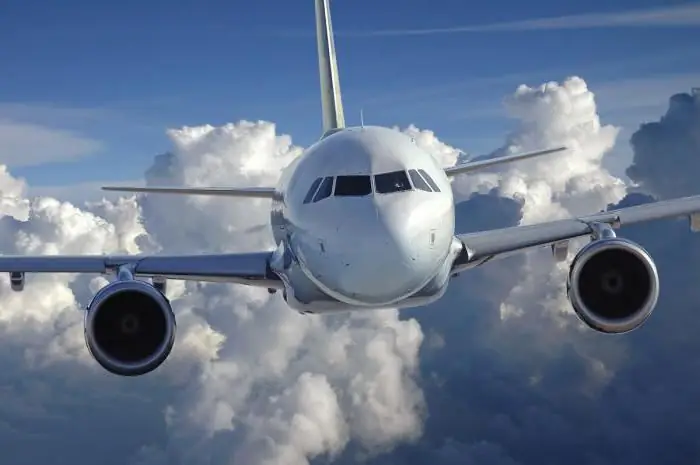- Author Harold Hamphrey [email protected].
- Public 2023-12-17 10:06.
- Last modified 2025-01-24 11:10.
Fokker-70 is an aircraft that was created in the Netherlands by the designers of the company of the same name in 1993. Its main purpose was the implementation of passenger air transportation over short distances. During the operation of the model, the reputation of the so-called corporate aircraft was fixed behind it.

A Brief History
Work on the creation of this airliner began in 1992. The main goal pursued by the company's engineers was the replacement of the obsolete F-28 jet aircraft at that time with an efficient and modern model.
The prototype Fokker-70 made its debut flight from the airport in Wonsdrecht in 1993. Following a successful flight test program, the aircraft has proven itself to be even quieter and faster than originally expected.
On October 14, 1994, the airliner was certified by the FAA and the Netherlands. Ten days later, Ford Motor Company received the first production aircraft of this modification.
First customers
The novelty was for the general publicpresented in June 1993 as part of an aviation exhibition in Paris. Even then, the manufacturing company received a debut order for fifteen Fokker-70 aircraft from Indonesian air carriers Sempati Air and Pelita Air Service.
Among the representatives of Europe, the first customer of the airliner was the British company British Midlands, with which in November 1993 an agreement was signed for a long-term lease of five aircraft. A month later, the Dutch sold two airliners to the American company Mesa Air. In addition, the agreement provided for the possibility of further purchase of six more cars.

Key Features
The Fokker-70 aircraft has a narrow fuselage and rather modest dimensions. In particular, its length is 30.91 meters, and its height is 8.51 meters. At the same time, the wingspan of the airliner is 28.08 meters. The maximum takeoff weight of the machine is set at around 36.74 tons. The airliner is designed for the simultaneous transportation of no more than 79 passengers. The crew consists of two people. The aircraft is capable of flying over distances not exceeding 2,000 kilometers.
The model is equipped with two Rolls-Royce Tay Mk.620 turbojet engines. The traction power of each of them is 6290 kgf. They are located in the tail section of the machine. The capacity of the fuel tanks is 9640 liters. The practical ceiling is limited to 10,700 meters. The cruising speed of the vessel is 850 km/h.
The aircraft uses Collins avionics, which fully complies withARINC-700 standard. Information about flight characteristics, operation of engines and on-board systems is shown to pilots through six color digital screens. The model also has a diagnostic system.
Salon
Now a few words about the accommodation of passengers in the Fokker-70. The layout of the cabin is quite simple and very similar to other models in the niche of aircraft designed for 70-80 people. As noted above, the engines here are located in the tail section, therefore, when purchasing tickets for a liner of this modification, it is better to choose places in the front or middle part, where there is practically no noise.

End of production
In 1995, after the transition of the Fokker company into the ownership of a new owner, its situation deteriorated significantly. Moreover, the overcrowding of the market that prevailed at that time had a negative effect. As a result, in March 1996, it became known about the bankruptcy of the company. For some time, the completion of unfinished and ordered machines was carried out. In April 1997, the last copy of the airliner was delivered to the Dutch airline KLM.
In total, 47 machines were assembled during the serial production of the aircraft (including 1 prototype). It should be noted that the era of the model did not end with the bankruptcy of the manufacturer, because at present the Fokker-70 aircraft continue to be actively operated by more than one European airline.






